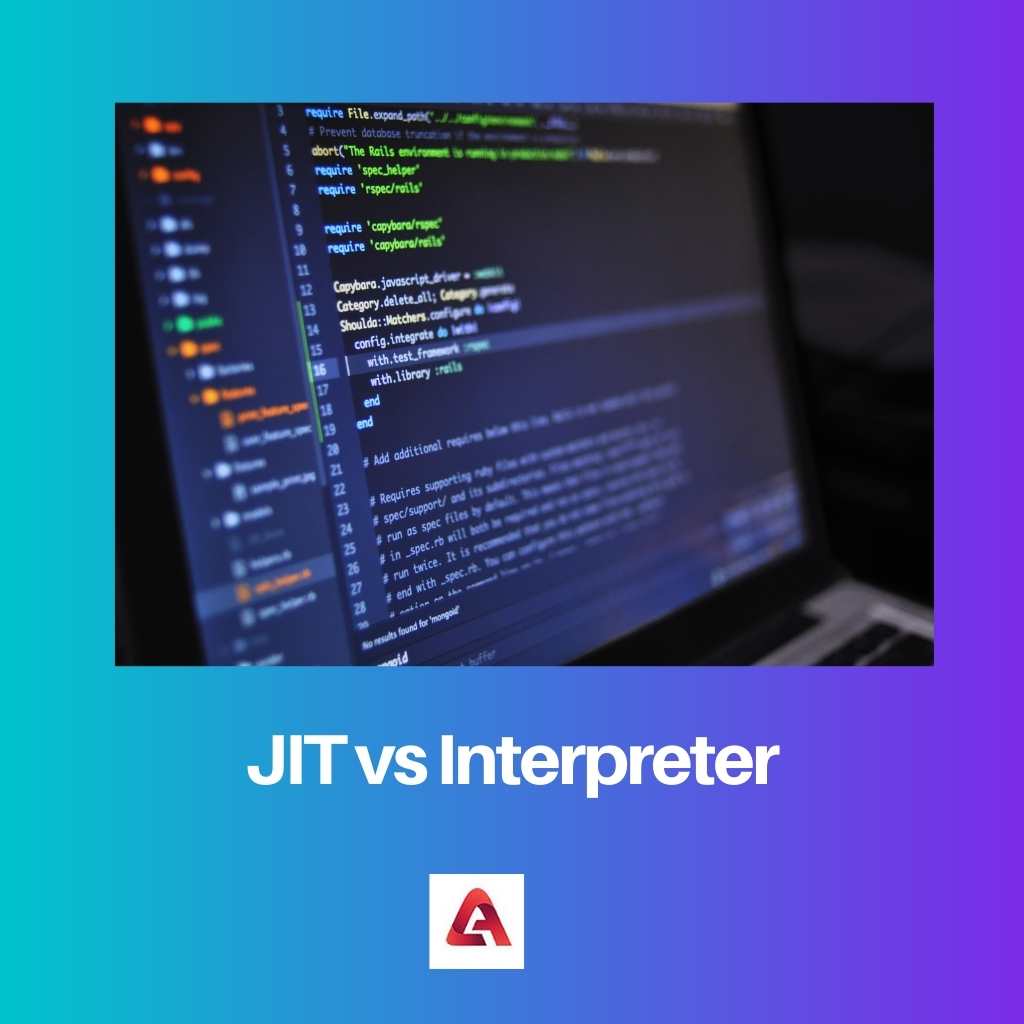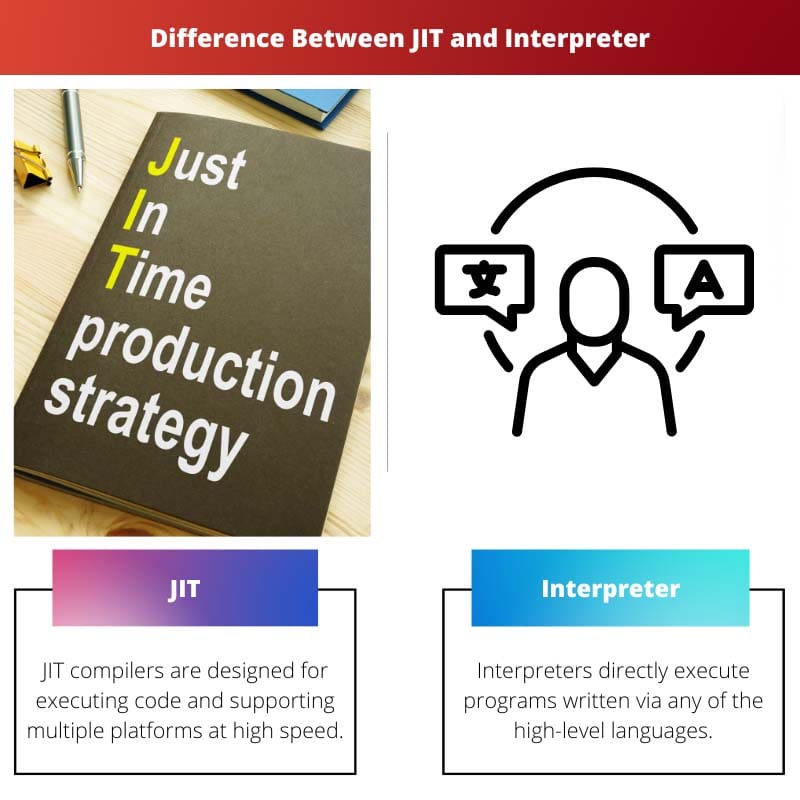The term ‘programming language’ refers to an artificial language that is used to control a machine specifically computers. They majorly help in effective communication to express algorithms and organize and manipulate information.
However, sometimes it becomes essential to convert these programming languages to machine code as computers only understand binary language. This is done through compilers and interpreters.
Key Takeaways
- JIT compilers translate source code to machine code during program execution, improving performance by compiling frequently used code segments.
- Interpreters execute source code line by line, offering easier debugging but slower performance.
- JIT compilers are more suitable for performance-critical applications, while interpreters are better for rapid development and testing.
JIT vs Interpreter
JIT (Just-in-Time) is a technique used by some programming languages to improve performance. With JIT, the code is compiled on the fly while the program is running and executed. An interpreter reads source code of a program and executes it directly, without the need for compilation.

Just-in-time compilers are a program that converts bytecode into instructions that are transferred to a computer’s processor (CPU). These are used for improving performance by improving application runtime.
A distinguishing factor of jit compilers is that, unlike other compilers, the code is translated just in time i.e. while the program is running. This results in an easily readable and faster instruction set.
An interpreter like a human interpreter converts a high-level code into an easily understandable machine code. It reads every statement of code and executes or converts the same making it useful for small programs such as scripting.
It can also be used in the development stage for testing small chunks of code. Programming languages that make use of interpreters are Ruby, Python, JavaScript, etc.
Comparison Table
| Parameters of Comparison | JIT | Interpreter |
|---|---|---|
| Meaning | Just-in-time compiler is a part of the Java Runtime Environment that helps in improving the performance of Java applications | It is a software that enables the conversion of instructions written in a high-level language into the machine language |
| Purpose | Compiling bytecode into machine code at runtime thereby improving the bytecode execution speed | Conversion of source code into machine code line by line |
| Ease of test | Less easy to test | Interpreted programs are easier to test |
| Speed of execution | Faster compared to the interpreter | Slower |
| Associated languages | JIT is used by Java | PHP, Ruby, etc |
| Performance | Better than interpreter | Not as good as JIT |
What is JIT?
JIT compilers are designed for executing code and supporting multiple platforms at high speed. These have originated from the need for a compiler to take on additional responsibilities apart from the original functions.
Three types of JIT compilers are as follows:
- Pre-JIT: Entire source code is compiled at the time of compilation. This is then used at the deployment.
- Econo-JIT: Methods called during the run time are compiled.
- Normal-JIT: Methods called during the run time are compiled using normal-JIT. The code so compiled is stored in the form of a cache for subsequent use.
A JIT compiler mainly compiles bytecode sequences into codes sent to the processors for carrying those codes out. JIT compilers can produce relatively simple optimizations in the process.
They can also be separated based on varying levels of optimization. Each of these levels is associated with a set level of performance.
Initial levels of optimization are called warm, while the ones that have scope for further optimization are called hot and so on.
However, major drawbacks of JIT compilers include increased cache memory usage, extra startup time in the first call, and reduced capability to share code via multiple platforms.
These issues are overcome by Ahead-of-time compilation. In Java, adaptive optimization can be used in place of JIT.
What is Interpreter?
Interpreters directly execute programs written via any of the high-level languages.
They transform the high-level language into an intermediate one which is then executed, or it may parse the source code statement by statement to perform the commands therein.
Various types of interpreters include:
- Threaded Code Interpreters: They make use of pointers to point to an instruction sequence or function
- Self interpreters: A special form of interpreters, these are written in a language that can interpret itself.
- Bytecode interpreters
- Threaded Code Interpreters
Interpreted language can run on multiple hardware platforms. The main source code remains unchanged, though the interpreter converts it into the machine language.
However, for running interpreters on various hardware platforms, they need to be updated as per the requirements of the hardware platform in use.
An interpreted program is easier to test compared to the compiled ones. However, execution speed is slow in interpreters as a line is translated one at a time at the time of running of the program.
The plus side is that it can be stopped in between to make changes to the code or for debugging. This also helps in recognizing errors immediately.
Interpreters are widely used on Web servers that run executable scripts. Educationally, they are used to show students the process of programming each script at a time.
Main Differences Between JIT and Interpreter
- JIT is used to compile bytecode into machine code while the program is running resulting in improved bytecode execution speed. On the other hand, the interpreter is used to convert source code into machine code statement by statement or line by line.
- JIT is less easy to test while interpreted programs have ease of testing.
- JIT’s speed of execution is faster compared to interpreters.
- Languages associated with JIT include Java, C#, Smalltalk, Pascal Java, etc. On the other hand, languages associated with an interpreter are PHP, Ruby, etc.
- Performance of JIT is better than interpreters.





